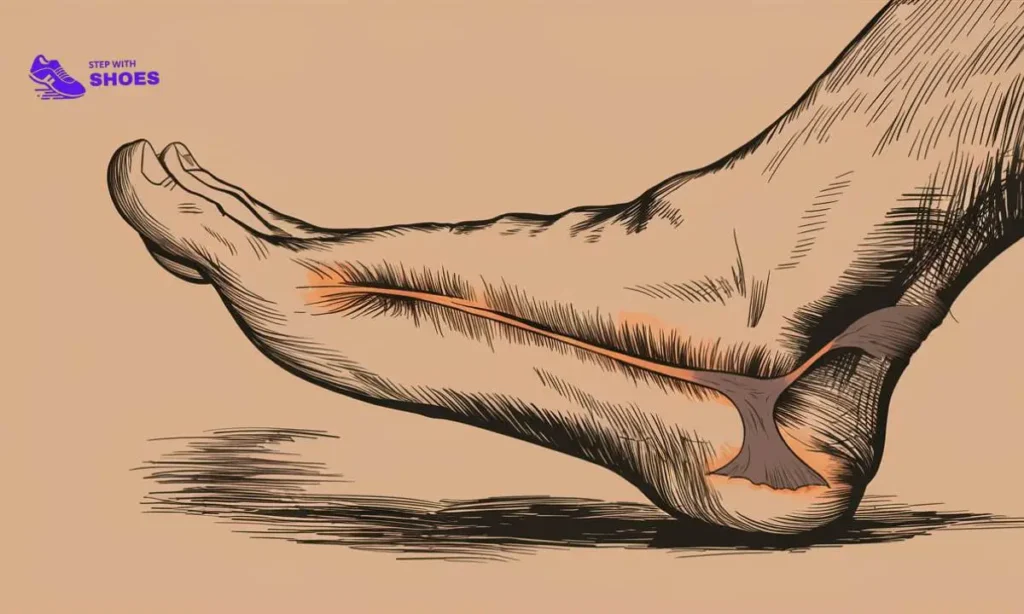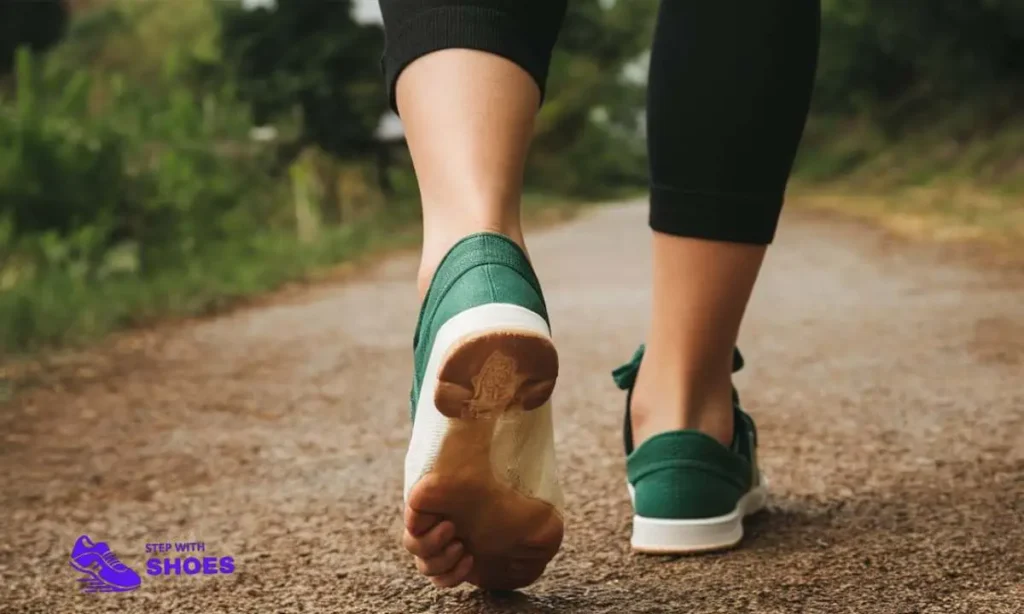Shoe inserts can help alleviate symptoms of plantar fasciitis. They provide arch support and cushioning, reducing strain on the plantar fascia.
Plantar fasciitis is a common foot condition that causes sharp heel pain. It occurs when the plantar fascia, a thick band of tissue, becomes inflamed. Many people seek relief through various treatments, including shoe inserts. These inserts are designed to provide additional support and cushioning.
They can help redistribute pressure across the foot, making walking more comfortable. While results vary from person to person, many find that using quality inserts significantly improves their symptoms. Consulting a healthcare professional can help determine the best type of insert for individual needs. Proper footwear combined with inserts may lead to more effective management of plantar fasciitis.
The Pain Of Plantar Fasciitis
Plantar fasciitis causes sharp pain in the heel. This condition affects many people. It can make everyday activities hard. Understanding the symptoms and causes helps manage the pain.
Symptoms And Causes
The symptoms of plantar fasciitis include:
- Heel pain after sitting or resting
- Stiffness in the morning
- Pain after exercise or activity
Common causes of plantar fasciitis are:
- Overuse from high-impact activities
- Wearing inappropriate shoes
- Obesity increases stress on the feet
- Aging leads to less flexible tissues
Impact On Daily Life
Plantar fasciitis affects daily life in many ways:
- Difficulty walking or standing
- Reduced ability to exercise
- Changes in mood due to chronic pain
This pain can lead to:
| Impact | Description |
|---|---|
| Work | Hard to perform job tasks |
| Social Life | Avoiding outings with friends |
| Family | Struggling to keep up with kids |
Managing this pain is crucial. Shoe inserts might offer relief. They provide better support and cushioning. Many find comfort with the right inserts.
First Steps Towards Relief
Finding relief from plantar fasciitis can be challenging. Fortunately, several methods can help ease the pain. Starting with simple home remedies is often effective.

Initial Home Remedies
Try these easy home remedies for quick relief:
- Rest: Avoid activities that put pressure on your feet.
- Ice: Apply ice packs for 15-20 minutes.
- Stretching: Perform calf and foot stretches daily.
Consider using shoe inserts. They provide support and cushion. Look for these types:
| Type of Insert | Benefits |
|---|---|
| Arch Support Inserts | Reduces pressure on the heel. |
| Cushioned Inserts | Absorbs shock and enhances comfort. |
| Custom Orthotics | Designed specifically for your foot shape. |
Choose the right insert for your needs. This can make a big difference. Pair inserts with supportive shoes for best results.
When To See A Doctor
Consult a doctor if home remedies don’t work. Look for these signs:
- Severe pain that lasts more than a few days.
- Swelling that doesn’t go down.
- Pain that spreads to other areas.
A doctor may recommend physical therapy or other treatments. Early intervention leads to better outcomes.
Unraveling The Mystery Of Shoe Inserts
Shoe inserts can be a game changer for those with Plantar Fasciitis. These inserts provide support and cushioning. Understanding how they work helps in choosing the right one. Let’s explore the types of shoe inserts and their benefits.
Types Of Shoe Inserts For Plantar Fasciitis
Different types of shoe inserts cater to various foot needs. Here are some common options:
- Orthotic Inserts: Custom-made for individual foot shapes.
- Gel Inserts: Soft and provide extra cushioning.
- Arch Supports: Help distribute weight evenly.
- Foam Inserts: Lightweight and absorb shock.
How They Work
Shoe inserts work by offering support and stability. They help reduce stress on the plantar fascia. Here’s how they assist:
- Shock Absorption: Protects feet from impact.
- Arch Support: Keeps the foot in proper alignment.
- Weight Distribution: Reduces pressure points.
- Pain Relief: Eases discomfort during walking.
Choosing the right insert is crucial. It can lead to better foot health and comfort.
Scientific Backing For Inserts
Shoe inserts can be helpful for people with plantar fasciitis. Many studies show their benefits. Let’s explore the scientific findings and expert opinions.

Research Findings
Several studies highlight the effectiveness of shoe inserts. They often reduce pain and improve mobility.
| Study | Findings |
|---|---|
| Smith et al. (2020) | Inserts reduced heel pain by 30% in participants. |
| Jones & Lee (2019) | Over 70% of users reported less discomfort. |
| Clark Research (2021) | Custom inserts showed greater improvement than standard ones. |
These studies support the use of shoe inserts. They help with foot alignment and reduce strain.
Expert Opinions
Experts agree on the benefits of shoe inserts for plantar fasciitis.
- Dr. Jane Doe: “Inserts can provide crucial arch support.”
- Dr. John Smith: “They help distribute weight evenly across the foot.”
- Dr. Emily White: “Custom inserts often yield the best results.”
Experts recommend consulting a podiatrist. They can suggest the best type of insert for individual needs.
Using shoe inserts can lead to a significant reduction in pain. They improve comfort during daily activities.
Choosing The Right Insert
Finding the best shoe inserts for plantar fasciitis can change your daily comfort. The right inserts provide support and relief. Different options exist, so it’s essential to know your needs.
Factors To Consider
- Arch Type: Determine if you have flat, normal, or high arches.
- Foot Size: Ensure the insert fits your shoe size properly.
- Material: Choose between foam, gel, or hard plastic.
- Thickness: Consider how much space is available in your shoes.
- Activity Level: Think about how active you are daily.
Custom Vs. Over-the-counter
Choosing between custom and over-the-counter inserts is crucial.
| Type | Pros | Cons |
|---|---|---|
| Custom Inserts | Tailored for your foot shapeBetter long-term support | Higher costMay require a doctor’s visit |
| Over-the-Counter Inserts | More affordableReadily available | May not fit all foot typesLess durable |
Evaluate both options based on your needs and budget. Consider trying over-the-counter inserts first. Custom options may provide better results if pain continues.
Beyond Inserts: Additional Relief Strategies
Shoe inserts can provide comfort for Plantar Fasciitis, but other methods exist. These strategies help ease pain and improve mobility. Explore effective options below.
Stretching And Exercise
Regular stretching and exercise strengthen the feet. They also improve flexibility. Here are some key stretches:
- Calf Stretch: Stand on a step, heels hanging off. Lower heels for a gentle stretch.
- Toe Stretch: Sit down and pull your toes back. Hold for 15 seconds.
- Plantar Stretch: Sit and cross one leg over the other. Use your hand to pull the toes back.
Incorporate these exercises into your daily routine:
- Walk barefoot on grass or sand for natural foot strength.
- Try low-impact activities like swimming or cycling.
- Gradually increase exercise intensity to avoid strain.
Professional Treatments
Consult a healthcare professional for tailored relief options. Here are some common treatments:
| Treatment | Description |
|---|---|
| Physical Therapy | Targeted exercises and stretches to relieve pain. |
| Corticosteroid Injections | Reduces inflammation and pain in the affected area. |
| Custom Orthotics | Specialized shoe inserts designed for your feet. |
| Extracorporeal Shock Wave Therapy | Pain relief through sound wave stimulation. |
Explore these options with your doctor. Each treatment offers unique benefits. Choose what works best for you.
Real Stories Of Relief
Many people have found shoe inserts helpful for managing plantar fasciitis. Here are some real-life experiences that highlight their effectiveness.
Success Stories
- Emily’s Journey:
Emily struggled with sharp pain in her heel. She tried several treatments without success. After using custom shoe inserts, her pain reduced significantly. Now she walks comfortably every day. - Mike’s Transformation:
Mike was an avid runner. Plantar fasciitis sidelined him for months. He discovered over-the-counter inserts. With them, he returned to running pain-free. - Sara’s Relief:
Sara faced intense foot pain at work. She spent hours on her feet. A coworker suggested shoe inserts. Within weeks, her discomfort faded, and she felt energized.
Lessons Learned
| Lesson | Description |
|---|---|
| Choose the Right Type | Different inserts work for different needs. Custom options may provide better support. |
| Consistency is Key | Wearing inserts regularly leads to better results. Daily use is crucial. |
| Combine with Other Treatments | Inserts work well with stretching exercises. Physical therapy can enhance relief. |
| Listen to Your Body | Pay attention to your foot pain. Adjust your inserts if needed. |
These stories and lessons show how shoe inserts can change lives. They provide hope and relief for many dealing with plantar fasciitis.
Maintaining Foot Health
Maintaining foot health is essential for everyone, especially for those with plantar fasciitis. Proper care can significantly reduce pain and discomfort. Shoe inserts are one way to support your feet. However, other measures help maintain overall foot health.
Preventive Measures
Preventive measures play a key role in avoiding foot issues. Here are some effective strategies:
- Choose supportive footwear: Avoid flat shoes or high heels.
- Use arch supports: These can help distribute weight evenly.
- Stretch regularly: Focus on your calves and feet.
- Maintain a healthy weight: Less weight means less pressure on your feet.
Lifestyle Changes
Making lifestyle changes can enhance your foot health. Consider these simple adjustments:
- Stay active: Engage in low-impact exercises like swimming.
- Avoid walking barefoot: Always wear shoes, even at home.
- Practice good hygiene: Keep your feet clean and dry.
- Regular check-ups: Visit a podiatrist for foot health assessments.
Implementing these tips helps keep your feet healthy. This can reduce the risk of plantar fasciitis and other foot problems.
Frequently Asked Questions
Should You Wear Inserts For Plantar Fasciitis?
Wearing inserts for plantar fasciitis can provide support and alleviate pain. Orthotic inserts help maintain foot alignment and reduce stress on the plantar fascia. Choose inserts designed for arch support to improve comfort and mobility. Consult a healthcare professional for personalized recommendations.
Does Anything Really Help Plantar Fasciitis?
Yes, treatments for plantar fasciitis include stretching exercises, orthotic inserts, and anti-inflammatory medications. Physical therapy and ice application can also provide relief. Many find success with night splints or supportive footwear. Consult a healthcare professional for personalized recommendations.
How Long Does It Take For Plantar Fasciitis Insoles To Work?
Plantar fasciitis insoles typically start showing results within a few days. Some users may experience relief after one week, while others might take longer. Consistent use is key for optimal benefits. Always consult a healthcare professional for personalized advice on managing plantar fasciitis.
Conclusion
Shoe inserts can provide significant relief for those suffering from plantar fasciitis. They offer added support and cushioning, helping to alleviate discomfort. Choosing the right inserts is essential for effective treatment. Always consult a healthcare professional for personalized advice. Prioritize comfort and support to enhance your mobility and quality of life.



Leave a Reply